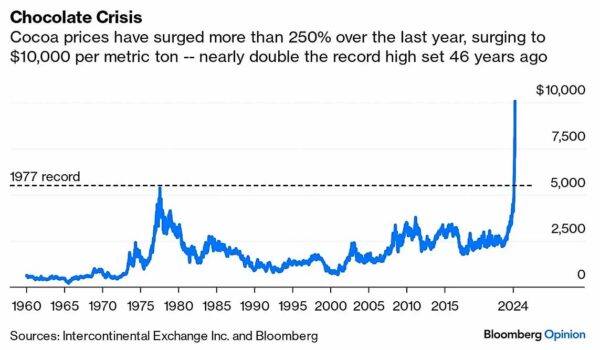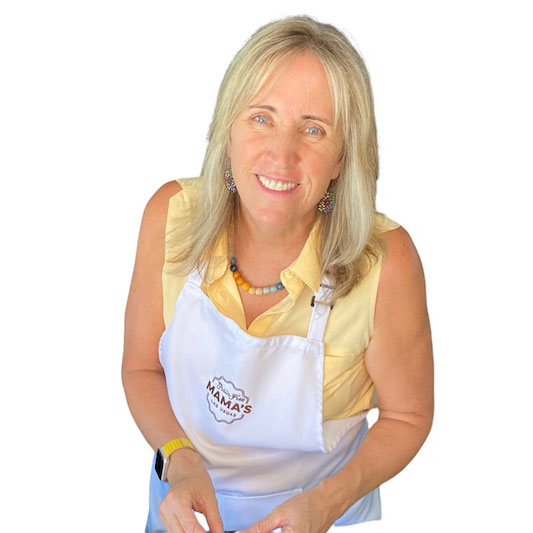Rising Cacao Prices – The Hidden Gluten Risk in Malted Barley Flour Substitutes

In recent times, the price of cacao has seen a sharp increase in price. The recent pandemic, weather variations, and rising costs of shipping have affected crops more severely. These rising prices have prompted ingredient companies to seek cost-effective alternatives. One such substitute being advocated is malted barley flour, which can replace up to 15% of cocoa in various formulations.
Is this a good idea? While this might offer financial relief for manufacturers, it poses significant health risks for celiac and gluten-sensitive consumers. At Grain Free Mama’s, we are fully committed to transparency and clean ingredients, ensuring our products remain safe and trustworthy for all our customers.
The global cacao market has been experiencing unprecedented price hikes due to several interconnected factors. Firstly, there has been a consistent rise in the demand for chocolate products, particularly in emerging markets where the middle class is expanding, and consumption patterns are changing. This increased demand, however, has not been met with a corresponding rise in supply.

Weather conditions in key cacao-producing regions like West Africa and South America have been unpredictable, often resulting in poor harvests. Additionally, cacao plants are susceptible to diseases that can devastate crops, further reducing the available supply. Economic factors such as inflation and currency devaluation in these countries also contribute to the higher costs.
Moreover, there is a growing emphasis on fair trade and ethical labor practices within the cacao industry. Ensuring that farmers are paid fair wages and work under humane conditions leads to higher production costs, which are inevitably passed on to consumers.
As manufacturers seek ways to mitigate the impact of rising cacao prices, malted barley flour has emerged as a popular alternative. This flour is produced from barley that has been allowed to germinate, then dried and ground. It offers a sweet, malty flavor and can enhance the taste and color of baked goods. Some companies advocate using malted barley flour to replace up to 15% of cocoa in products, presenting it as a cost-saving measure without compromising too much on flavor or quality.
However, for individuals with celiac disease or gluten sensitivity, this substitution poses serious health risks. Malted barley flour contains gluten, a protein that can cause a range of adverse reactions in these individuals. Symptoms can vary from mild digestive discomfort to severe intestinal damage, which affects nutrient absorption and overall health.
This hidden gluten content can also make it challenging for affected individuals to identify the source of their symptoms, complicating diagnosis, and management of their condition. Having a gluten free symbol certification does not mean there is no gluten. A product can have up to 20 ppm (parts per million) of gluten and be certified gluten free. The unexpected presence of gluten in products traditionally considered safe exacerbates these difficulties, underscoring the need for vigilant label reading and informed consumer choices.
Are these products going to be required to label the addition of malted barley flour? What if the content keeps the gluten level below 20 ppm? For many, ANY gluten causes digestive problems. Is full disclosure mandated? I have so many unanswered questions with this.
Celiac disease is an autoimmune disorder where ingestion of gluten leads to damage in the small intestine. For those with gluten sensitivity, consuming gluten can cause symptoms similar to celiac disease, such as bloating, diarrhea, and abdominal pain. In both cases, the consumption of gluten triggers an immune response that damages the lining of the small intestine, leading to poor absorption of nutrients and a range of associated health issues.
The use of malted barley flour as a substitute for cocoa introduces gluten into products that consumers might not suspect to contain it. This hidden gluten can lead to inadvertent consumption, resulting in health problems that can be difficult to trace back to their source. The lack of clear labeling further complicates matters, making it essential for consumers to be diligent in their food choices.
A celiac consumer might consume a previously safe chocolate product, now reformulated with malted barley flour, and experience a resurgence of symptoms. If they are unaware of the barley, they may not be able to correctly identify the problem. Such incidents underline the critical need for transparency in ingredient labeling and formulation changes.
To protect themselves, consumers must become adept at reading ingredient labels and recognizing terms that indicate the presence of gluten. Here are some tips:
– Ingredient Labels: Look for specific terms like “malted barley flour” or “barley malt,” and the scientific terms like “hordeum vulgate.”
– Product Research: Visit product websites or contact manufacturers directly to inquire about ingredient changes and gluten content.
– Certification Symbols: Opting for products that display gluten-free certification symbols does not necessarily ensure no gluten, so buyers beware.
Vigilance is key. If your current products come out with new packaging carefully re-inspect the ingredient labels. Consumers should also stay informed about industry trends and ingredient substitutions through reliable sources and community networks, ensuring they are aware of any changes that might affect their health
So how does a concerned consumer stay on top of this? Navigating the complexities of ingredient changes and gluten content requires a proactive approach. Here are steps consumers can take to ensure they are choosing safe and healthy products:
– Stay Informed: Keep up to date with industry changes and ingredient substitutions through reliable sources and community networks.
– Educate Others: Share information within the celiac and gluten-sensitive communities to raise awareness about potential risks.
– Advocate for Transparency: Encourage manufacturers to clearly label any changes in ingredient formulations and maintain transparency about gluten content.
– Support Transparent Brands: Choose brands that are committed to transparency and clean ingredients, like Grain Free Mama’s.
Grain Free Mama’s Commitment to Transparency
At Grain Free Mama’s, we are fully committed to transparency and the use of clean, gluten-free ingredients. We understand the importance of trust and safety in the products our customers consume. Our dedication to maintaining high standards means we meticulously source our ingredients, ensuring they are free from gluten and other harmful additives.

We believe in clear and honest communication with our customers, providing detailed ingredient information and updates about any changes in our formulations. Our goal is to empower consumers to make informed choices that support their health and well-being.
The rising cost of cacao has led to the promotion of malted barley flour as a substitute, posing risks for celiac and gluten-sensitive consumers. By staying informed, reading labels diligently, and supporting transparent brands, consumers can protect their health and make safe choices. At Grain Free Mama’s, we remain committed to providing products that prioritize your health and well-being through transparency and clean ingredients. We are also fiercely committed to sharing our knowledge of current developments and trends to keep our loyal customers up to date so that they can be armed to make informed decisions about their eating choices with confidence.

Written by Margie Traxler
Grain Free Mama’s is a FoodTech Consumer Product Goods company. We make gluten/grain/sugar free (Edible Grasses Free), dairy free and botanical nut free baking mixes that put the simple back into simply good for you. We also have educational resources to help you on your healthy eating journey. Margie, the Founder/CEO, received her B.S. in Biology from Portland State University. She has 22 years of experience as a successful Restaurant owner. She lives and operates her business in Henderson, Nevada.





